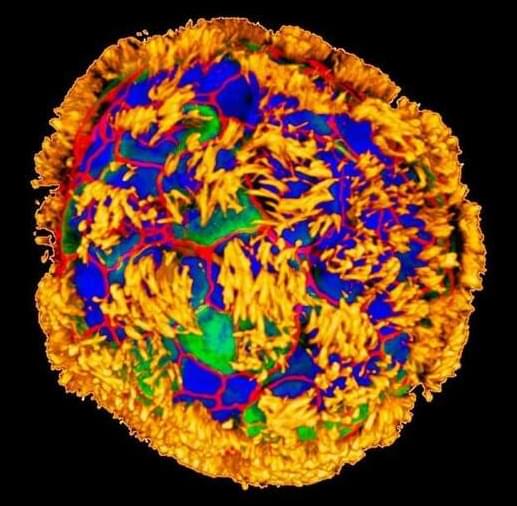Dec 14, 2023
Why mega brain project teams need to be talking to each other
Posted by Dan Breeden in category: neuroscience
As large-scale neuroscience projects start to yield results, sharing data standards will become increasingly important.
As large-scale neuroscience projects start to yield results, sharing data standards will become increasingly important.
Generating a complete multimodal cell census and atlas of the mouse brain through collaborative data collection, tool development and analysis.
Brain transplant is not a reality for humans or for any living organism. But there are human research experiments in which transplanted brain cells are used to help treat several diseases that affect the brain. So far, there are very few results and measured outcomes of brain cell transplant, but the concept of transplanting brain tissue has shown some promise in preliminary studies.
If you are interested in having a brain cell transplant procedure, you can talk to your healthcare provider and look for a university or research center where brain cell transplant procedures are being done. These procedures tend to be part of research studies, so you will likely need to enroll in a research study if you want to have this type of treatment.
The brain is composed of many different regions and cells. Neurons in the brain have dedicated functions, and they do not typically heal when they are damaged. Parkinson’s disease, stroke, multiple sclerosis (MS), epilepsy, Alzheimer’s disease, and head trauma are among the conditions for which brain cell transplant has been used for humans in an experimental setting.
Summary: Researchers achieved a groundbreaking feat by creating the first complete cell atlas of a mammalian brain, specifically a mouse. This comprehensive map details over 32 million cells, their types, locations, molecular information, and connectivity.
The atlas offers an in-depth look into the mouse brain, a crucial model in neuroscience, and lays the groundwork for advanced treatments for mental and neurological disorders. It encompasses structural, transcriptomic, and epigenetic data, providing a blueprint for brain circuit operations and functioning.
Australians develop a supercomputer capable of simulating networks at the scale of the human brain.
The world’s first supercomputer capable of simulating networks at the scale of the human brain has been announced by researchers at Western Sydney University.

Tiny made from human windpipe cells encouraged damaged neural tissue to repair itself in a lab experiment — potentially foreshadowing a future in which creations like this patrol our bodies, healing damage, delivering drugs, and more.
The background: In a study published in 2020, researchers at Tufts University and the University of Vermont (UVM) harvested and incubated skin cells from frog embryos until they were tiny balls.
Continue reading “Tiny biobots surprise their creators by healing wound” »
A study has found that every 1% decrease in deep sleep annually in individuals over 60 years old is associated with a 27% higher risk of dementia. This research indicates that improving or preserving deep sleep, known as slow-wave sleep, in later life may help prevent dementia.
The study, led by Associate Professor Matthew Pase, from the Monash School of Psychological Sciences and the Turner Institute for Brain and Mental Health in Melbourne, Australia, and published in JAMA Neurology, looked at 346 participants, over 60 years of age, enrolled in the Framingham Heart Study who completed two overnight sleep studies in the time periods 1995 to 1998 and 2001 to 2003, with an average of five years between the two studies.
Researchers at Western Sydney University in Australia have teamed up with tech giants Intel and Dell to build a massive supercomputer intended to simulate neural networks at the scale of the human brain.
They say the computer, dubbed DeepSouth, is capable of emulating networks of spiking neurons at a mind-melting 228 trillion synaptic operations per second, putting it on par with the estimated rate at which the human brain completes operations.
The project was announced at this week’s NeuroEng Workshop hosted by Western Sydney’s International Centre for Neuromorphic Systems (ICNS), a forum for luminaries in the field of computational neuroscience.
This brain implant can reverse paralysis.
His brain implant made headlines in 2016. Now, he’s fighting for everyone to afford one.
The first cellular map of a mammalian brain is here.
High-resolution atlas charts neural neighborhoods for more than 5,300 cell types.